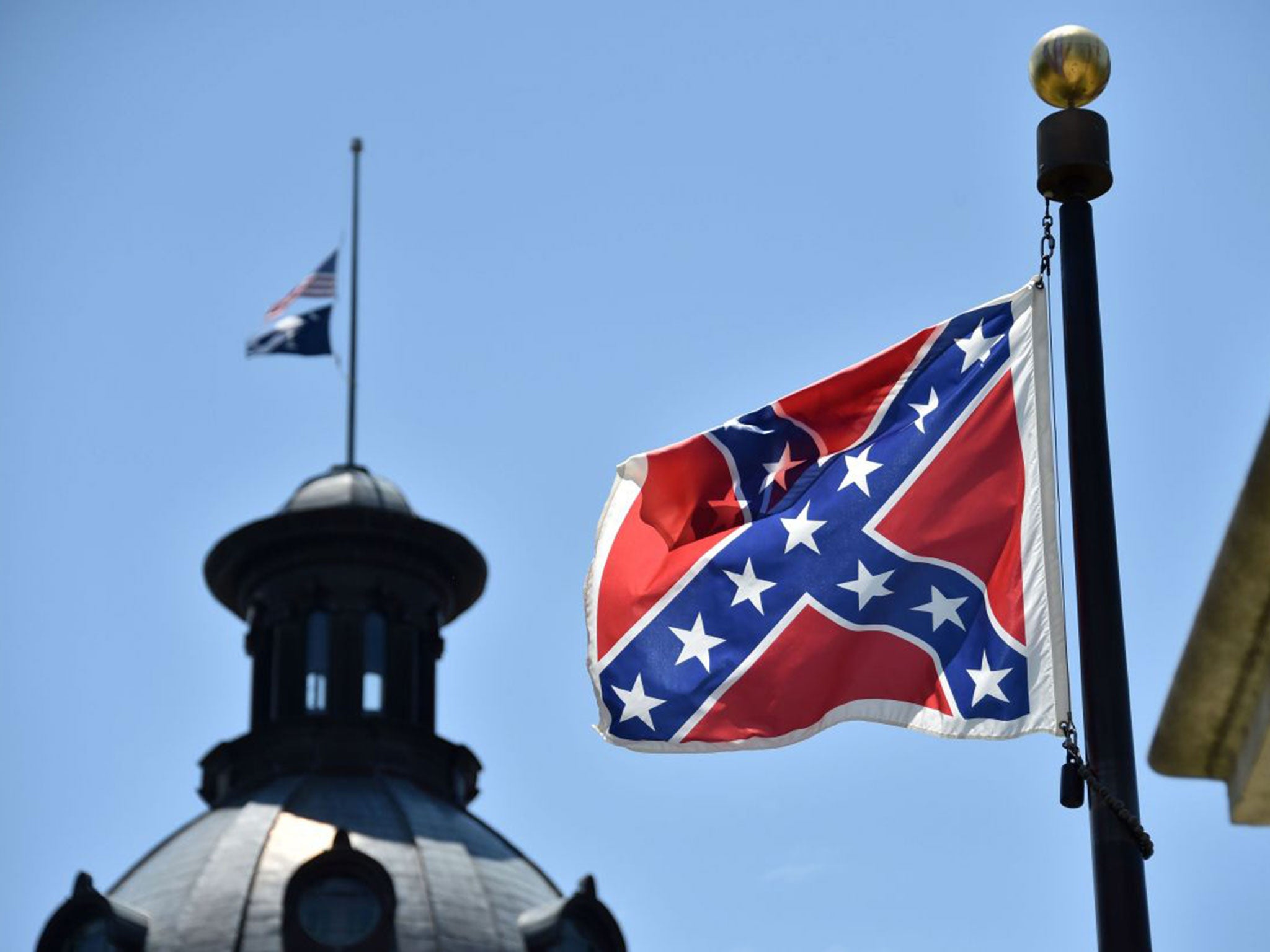Confederate flag furore is just part of America's growing Southern discomfort
For some, the flag is a perfectly legitimate symbol of the South's traditions and heritage, but for many more, it has become a reminder of the dark side of that heritage

As current events merely underline, nowhere on earth are flags more potent symbols than in the US. The Stars and Stripes is venerated as emblem of the nation – and occasionally desecrated in protest at that nation’s actions. But such insults are nothing compared to the vilification being heaped on its brief one-time rival, the flag of the Confederacy of slave states that fought and lost the American Civil War. Right now, it is about as well-regarded as the swastika.
Of the ripple effects of last week’s massacre in which a deranged white fanatic shot dead nine black worshippers in a church in Charleston, South Carolina, none is more striking than the backlash, against things Confederate – and above all the flag.
Alabama has removed four of them from its state capitol grounds. Mississippi is debating whether to remove the Confederate banner from the top left corner of its own state flag. Other states like Virginia are acting to ban the flag as an option for car numberplates.
Even South Carolina itself, where nostalgia about the “lost cause” runs deepest, may at last get rid of the Confederate flags flying on its state house grounds. Meanwhile giant retailers like Walmart and Sears say they will no longer stock the flag and other Confederacy-themed items, while on Thursday Apple announced it was banning Civil War games featuring the flag.
For some, the flag is a perfectly legitimate symbol of the South’s traditions and heritage. But for many more, it has become a reminder of the dark side of that heritage.
With its red background and blue cross filled with stars representing its 13 member states, it became the symbol of a South that could never let go of slavery, of the Ku Klux Klan and Jim Crow segregation, of resistance to the Civil Rights movement of the 1950s and 1960s, and of the plethora of far-right hate groups from which the 21-year-old Dylann Roof, the accused author of the massacre, drew inspiration.
Right now America seems to be saying, “Enough” – even at the risk of ignoring the real grievances of its black minority, for whom the flag, while an offensive reminder of slavery, is but a small one. Who knows where this new anti-Confederacy movement will end. Will every sign of it be erased – including a good few in the US Capitol itself, here in Washington DC? And what of the South’s soldiers who gave their lives, almost 500 of whom are buried at America’s most hallowed resting place, Arlington Cemetery?
Poles apart: controversial flags
Show all 5And, potentially most controversial of all, what of the man whose one-time family home overlooks Arlington Cemetery? No event or person has contributed more to the rosy-hued myth of the South than Robert E Lee, who lived in the house for 30 years before the Civil War began in 1861.
Lee was among the greatest generals in American history. He was an utterly decent man, torn between his oath of loyalty to the Union when he graduated from West Point and his Virginian origins. He opposed slavery, yet was a slave owner himself, and fought for the rebel states trying to preserve slavery. The ambiguity of the Confederate flag has nothing on that of Lee – whose own funeral was devoid of flags of any kind.
Subscribe to Independent Premium to bookmark this article
Want to bookmark your favourite articles and stories to read or reference later? Start your Independent Premium subscription today.

Join our commenting forum
Join thought-provoking conversations, follow other Independent readers and see their replies